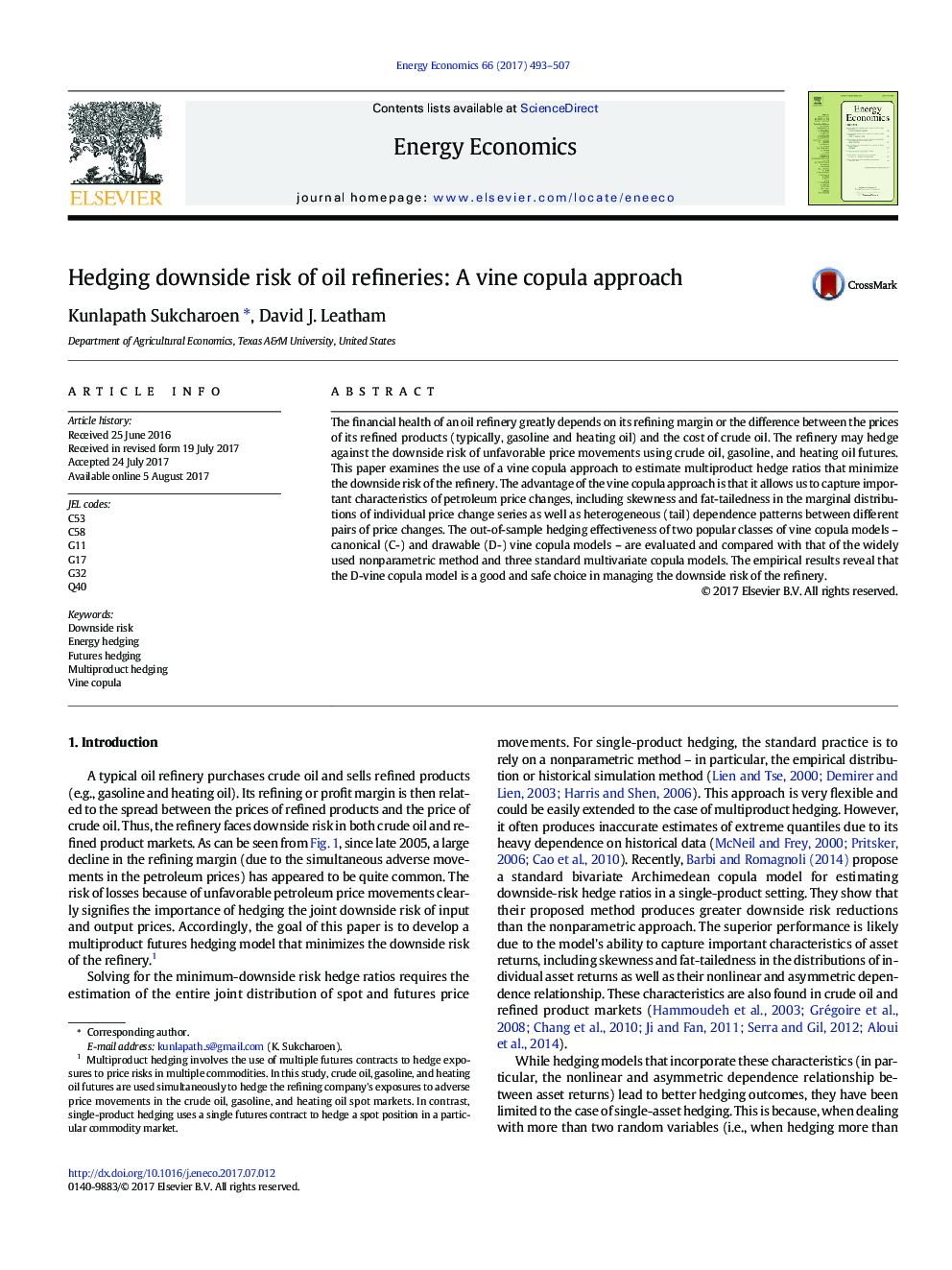| کد مقاله | کد نشریه | سال انتشار | مقاله انگلیسی | نسخه تمام متن |
|---|---|---|---|---|
| 5063636 | 1476698 | 2017 | 15 صفحه PDF | دانلود رایگان |
- The potential of vine copulas in the context of hedging downside risk is examined.
- The empirical study is based on a stylized problem of a loss-averse oil refinery.
- Minimum-downside risk hedge ratios based on C- and D-vine copulas are derived.
- Hedge ratios based on D-vine copula produce the best out-of-sample hedging outcome.
The financial health of an oil refinery greatly depends on its refining margin or the difference between the prices of its refined products (typically, gasoline and heating oil) and the cost of crude oil. The refinery may hedge against the downside risk of unfavorable price movements using crude oil, gasoline, and heating oil futures. This paper examines the use of a vine copula approach to estimate multiproduct hedge ratios that minimize the downside risk of the refinery. The advantage of the vine copula approach is that it allows us to capture important characteristics of petroleum price changes, including skewness and fat-tailedness in the marginal distributions of individual price change series as well as heterogeneous (tail) dependence patterns between different pairs of price changes. The out-of-sample hedging effectiveness of two popular classes of vine copula models - canonical (C-) and drawable (D-) vine copula models - are evaluated and compared with that of the widely used nonparametric method and three standard multivariate copula models. The empirical results reveal that the D-vine copula model is a good and safe choice in managing the downside risk of the refinery.
Journal: Energy Economics - Volume 66, August 2017, Pages 493-507
